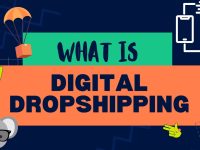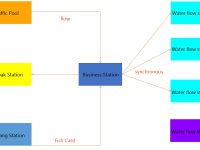Why SaaS Website Builders Are Not Suitable for Designer-inspired Brand Websites
Mainstream SaaS platforms like Shopify, BigCommerce, Shopyy, Ueeshop, etc., are not feasible for Designer-inspired Brand websites. Here’s why:
1. Payment Technology Limitations
-
Credit card channels: Usually have a low success rate (<20%) for most users and are practically inaccessible except for a few with overseas payment channels.
-
Paypal/Stripe/Square: While popular, these platforms rely on offline payment methods (like Western Union) for trust, which new buyers typically won’t accept due to no payment guarantees.
-
Intermediate station jump: Some SaaS platforms claim to use an “intermediate station” to bypass payment restrictions by redirecting payments, but this is ineffective because payment processors detect such redirects and block accounts/freeze funds.
-
Anti-crawler and cloaking technologies are required to avoid detection by PayPal/Stripe bots, involving advanced IP management, user-agent switching, and fake page displays.
-
Multiple accounts and payment gateways are necessary to handle high volume payments to avoid triggering manual reviews. Large-volume sellers require sophisticated polling and switching systems.
-
High transaction fees and turnover charges from payment processors reduce profitability significantly.
2. Cloaking Technology Deficiencies
-
Effective cloaking is critical to prevent account bans, but most SaaS providers do not offer or understand professional cloak services.
-
Good cloaks come from select foreign providers and require expertise to configure correctly.
-
Overly strict cloaks reduce real buyer conversions; too loose cloaks allow crawler detection and account bans.
-
SaaS platforms lack the integrated, one-stop cloak and crawler avoidance technologies needed for counterfeit sites.
3. Lack of Continuous Technical Updates
-
Designer-inspired Brand sites require rapid and ongoing updates in response to:
-
Payment processor crawler rule changes,
-
Advertising algorithm updates (e.g., Facebook),
-
New IP libraries and cloaking strategies.
-
-
SaaS providers do not typically have teams with deep industry knowledge or the agility to maintain these.
4. Platform Limitations vs. Independent Sites
-
SaaS platforms are inherently restrictive and monitored; Designer-inspired Brands cannot set their own flexible rules.
-
Independent, open-source platforms (e.g., WordPress+WooCommerce, OpenCart, Magento) allow for custom development and integration of advanced payment avoidance, cloaking, and traffic strategies.
-
SaaS platforms cannot support large-scale, complex counterfeit brand operations effectively.
5. Industry and Platform Risks
-
Large e-commerce platforms (Amazon, eBay, AliExpress) aggressively crack down on lookalike products, making these channels almost unusable for lookalike sellers.
-
Lookalike sellers face constant risk of delisting, account suspension, and fund freezing.
Conclusion
For Designer-inspired brand business, SaaS website builders do not meet technical and operational requirements such as advanced payment handling, cloaking, crawler avoidance, and rapid system updates. Independent open-source platforms combined with professional technical teams are the viable solution for sustainable Designer-inspired brand operations.





